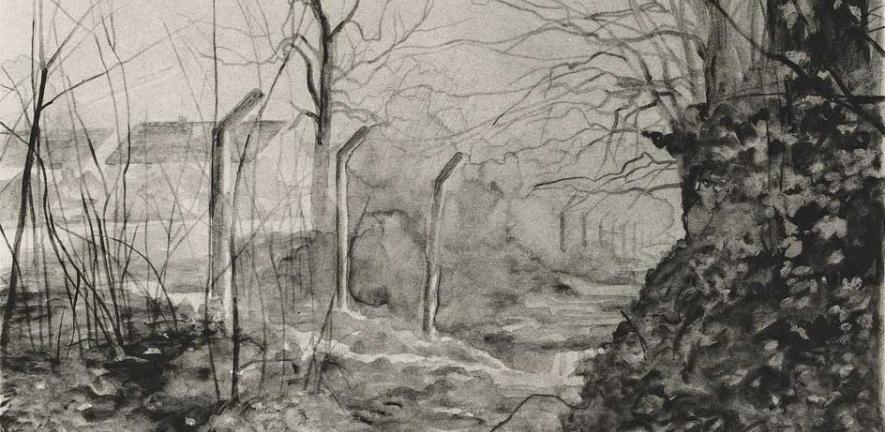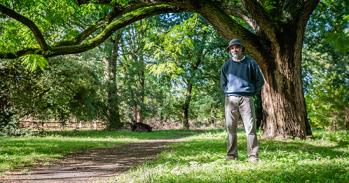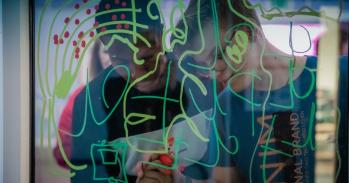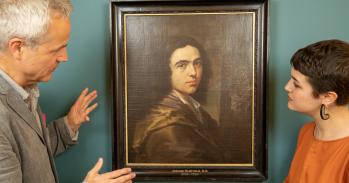
A show at the Fitzwilliam Museum featuring the work of contemporary British artists Michael Landy and George Shaw explores the places in between town and country where nature takes a hold on no man's land and weeds find niches in the concrete.
A show at the Fitzwilliam Museum featuring the work of contemporary British artists Michael Landy and George Shaw explores the places in between town and country where nature takes a hold on no man's land and weeds find niches in the concrete.
Landy wrapped the roots of his specimens in damp cotton wool, according them a tenderness that contrasts starkly with the shredding of his goods and chattels.
In 2001 thousands of people poured into an empty store on London’s Oxford Street to watch artist Michael Landy destroy all his possessions – from his socks to his Saab car - in an installation called Break Down. He followed this up in 2010 with Art Bin in which works of art, some of them by famous artists, were thrown away.
The book that meticulously records the precise details of each of the 7227 items that Landy destroyed for Break Down lies open in a case at the Fitzwilliam Museum, Cambridge, where some of the artist’s recent work is displayed alongside that of George Shaw in a two-man show called Edgelands.
Both YBAs (Young British Artists), Landy was born in 1963 and Shaw in 1966. Landy studied at Goldsmith College, and took part in Freeze the show that launched some of the most famous names of the contemporary art scene. Shaw studied painting at the Royal College of Art where he was a student of Peter Doig.
Beginning with Scrapheap Services in the mid-1990s, Landy has made a name for installations that explore of waste, consumerism and the commodification. Item no 4126 in Landy’s inventory of destruction of his belongings is Richard’s Maybe’s book Street Flowers, a compendium of the flora of wastelands.
Now in a series of etchings called Nourishment, Landy puts weeds – shepherd’s purse and creeping buttercup, herb Robert and common toadflax – centre stage on large sheets of blank paper. These plants are the great survivors, finding succour in cracks and crevices. Recorded in fine line, the delicate shapes of root and stem are centred on large sheets of blank paper.
To keep them alive while he drew them, Landy wrapped the roots of his specimens in damp cotton wool, according them a tenderness that contrasts starkly with the shredding of his goods and chattels. In capturing every tiny hair and curling tendril, he is said to have permanently damaged his sight.
Shaw’s work is naturalistic in its honesty; his focus is on a council estate on Tile Hill, the suburb of Coventry where he spent his childhood. His is an unremarkable England on a grey day – a place where everything and nothing happens. His paintings in Humbrol enamel paint – the little pots used by amateur model makers - saw him shortlisted for the Turner Prize in 2011, capturing the public imagination with their lack of artistic pretention.
In the dozen soft-ground etchings that make up Twelve Walks, Shaw takes the audience to the in-between spaces that are neither town nor country - the scuffed margins where weeds take root in the cracked concrete and dark alleys run along the backs of post-war semis on neglected estates.
The absence of figures in the Twelve Walks series conveys a sense of silence and almost-abandonment that would be eerie if the scenes portrayed were not so mundane. What we read into the emptiness is a sense of unease, a state of mind that’s in flux and uncertain: which way should we turn, which path should we take, what threat lies just out of sight?
In contrast, Shaw’s image of a giant tree, its limbs spread in a splendid arc, is defiant in its strength and solidity. Massive yet vulnerable, growing and dying, its mighty branches fill the sky. It’s called The Appointment. Here is nature in all her majesty – a landmark loved.
Edgelands continues at the Fitzwilliam Museum until 23 September. No charge. For opening hours and more information http://www.fitzmuseum.cam.ac.uk/
This work is licensed under a Creative Commons Licence. If you use this content on your site please link back to this page.





